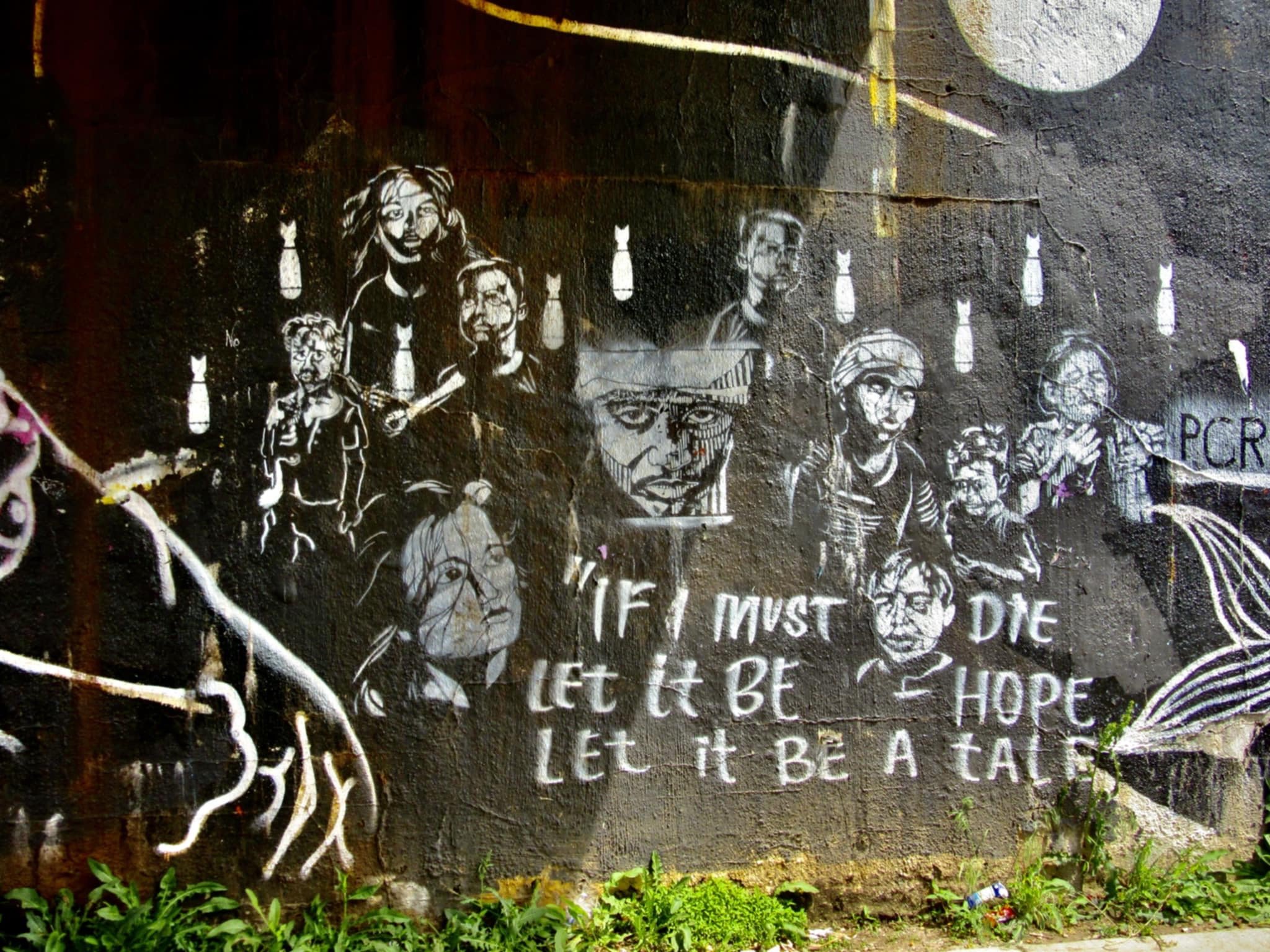The Art of Gentrification
By Robbie February
Groundcover contributor
There are a few new murals going up at any given time in Ann Arbor. It’s one of the many things that make the city lively and fun. My friend Ben recently received a commission to do an amazing mural at Washtenaw Dairy. There was a 10 by 40 foot mural called “Best Boy Blue” of a staggering and under-recognized genius that went up in Graffiti Alley last month.
Graffiti is a voice of underserved people that expresses concerns about society, remembers lost loved ones, or shows affection for bodily functions and components, to name a few. Originally seen as a form of vandalism, graffiti has evolved into a recognized art form that shapes the visual and cultural landscape of neighborhoods worldwide. This evolution challenges conventional perceptions and highlights graffiti's role in fostering creativity and community engagement.
Beyond aesthetics, graffiti plays a crucial role in shaping neighborhood identity. It serves as a visual representation of cultural diversity, historical narratives, and community values, thereby fostering a collective memory among residents. This cultural richness distinguishes neighborhoods and enhances their appeal as vibrant, livable spaces.
However, the increasing popularity of graffiti has also sparked debates about gentrification and urban development. Real estate developers and businesses sometimes appropriate graffiti to enhance property values or attract affluent residents, displacing long-time residents and erasing the authentic character of neighborhoods. This tension underscores the need for thoughtful urban policies that preserve graffiti as a form of cultural expression while mitigating its unintended consequences.
In recent years, graffiti has become a prominent medium for social justice movements. Artists use walls as canvases to memorialize victims of racial injustice, challenge systemic racism, and advocate for social change. These murals serve as poignant reminders of ongoing struggles and rallying points for community solidarity. Anthony McCormick, a local housing justice advocate, said, “Destroying a mural is equivalent to silencing a community. These voices that once cried out for recognition now fade into the background.”
Recognizing public art’s potential as a vehicle for education and community engagement, schools and organizations increasingly incorporate graffiti workshops and mural projects into their curricula. These initiatives not only teach artistic skills but also foster civic responsibility and cultural awareness among participants. By involving residents in the creation of public art, communities build social cohesion and strengthen bonds across diverse demographics.
In neighborhoods with rich cultural histories, graffiti serves as a means of preserving traditions and memories. Artists draw inspiration from local folklore, ancestral practices, and community narratives to create murals that celebrate diversity and challenge stereotypes. Graffiti thus becomes a living archive that documents stories and experiences, ensuring that cultural heritage continues to resonate within contemporary urban settings.
Despite its cultural value, graffiti faces regulatory challenges and legal scrutiny in many municipalities. Advocates argue for policies that recognize graffiti as a legitimate art form while addressing concerns about property damage. By fostering dialogue between artists, policymakers, and community members, cities can develop inclusive strategies that promote responsible graffiti practices and support artistic freedom.
Ann Arbor shame
One such piece has existed on the Huron Street railroad bridge — a hangout near the Delonis Center — for a few years. This piece of art recognized those that were killed by police, specifically people of color, it celebrated their lives, and called for change. This art was significant and this art had meaning but it was removed. Replacing art of those killed in police action with “flower-washed” tissue box art disrespects the community whose collective struggle it represents.
In May 2024, Ann Arbor unveiled a new mural adorning that same bridge, signaling a transformational moment for the city's downtown area. The mural's vibrant colors and flowery theme were intended to beautify the area and create a sense of pride and shared identity among local residents; but some feel differently. One local resident and artist stepped away from the excellent job they were doing managing FedUp Food Ministries to speak with me. Cortney Labbe said, “They intended to include Delonis Center residents in the project. I am not sure they did so. I’m surprised that covering up a significant Black Lives Matter mural didn’t raise any concerns during planning.”
Ripping out and replacing significant art to meet upper middle class aesthetics will not create the future that Ann Arborites want. According to newspaper reports, the corporate artists and their supporters “The Murals That Bridge” raised over $150,000 for this and a similar amount for other overpass mural projects. That is more than fifteen percent of the budget for The Shelter Association of Washtenaw County.
SAWC claims to serve more than 1200 people annually. Therefore, this effort to turn the Huron Street Bridge BLM mural into a Kleenex advertisement is a waste of funds that could otherwise house, feed, and support nearly 200 at-risk individuals in our community for a year. It demonstrates a lack of understanding of art, human kindness, and fiscal responsibility. If we continue to feed the cultural racism masquerading as quasi-philanthropic acts; our community will continue to fracture around socioeconomic borders.

